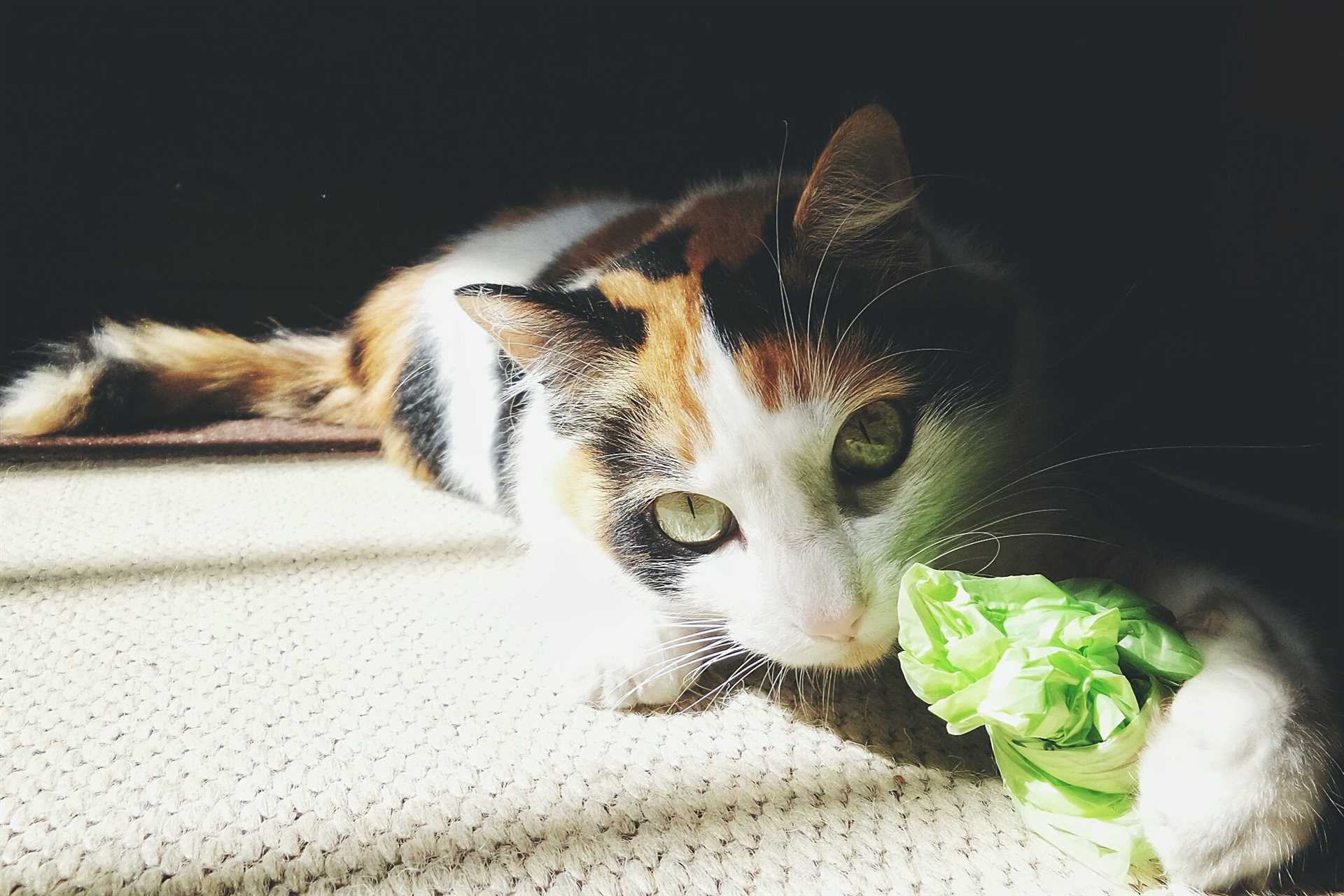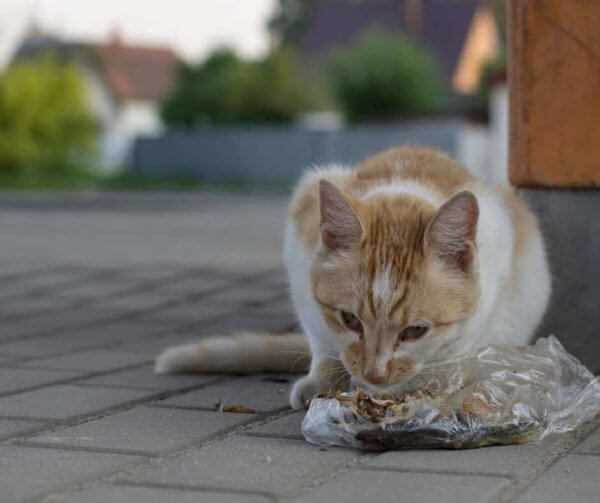

As an 8-year-old Scottish Fold, I’ve developed a taste for unusual objects, including synthetic materials. My fascination with these items often leaves my human puzzled. It turns out, this behavior isn’t as strange as it seems. Research indicates that the texture and sound of certain plastics can stimulate my senses, making them intriguing to chew on.
It’s not just about taste; boredom plays a significant role. Engaging with non-food items provides entertainment and mental stimulation. If you notice your furry companion reaching for plastic, consider providing alternative toys or textured items that can safely satisfy this urge. Interactive playtime can alleviate the monotony that sometimes drives us to seek out unconventional snacks.
Additionally, certain scents from plastics may mimic odors we find appealing. If you suspect your four-legged friend has an affinity for such materials, ensure they have access to safe alternatives. Keeping a close eye on what I interact with is crucial, as ingesting any material can lead to health issues. Always prioritize safety and well-being over curiosity.
Understanding the Causes of Plastic Consumption in Cats
Engaging with non-food items often stems from a blend of instinctual behavior, curiosity, and sensory stimulation. For me, chasing after shiny wrappers or crinkly bags is an exciting adventure that stimulates my playful side.
Instinctual Drives

- Feline ancestors relied on their senses to explore their environment. The texture and sound of certain materials trigger hunting instincts.
- Chewing mimics the action of tearing apart prey, providing a satisfying outlet for natural behaviors.
Environmental Factors
- Exposure to various materials during formative months can create associations; the allure of colorful or textured items grows.
- Stress or boredom may lead to seeking out unusual objects for entertainment or comfort. It’s essential to provide stimulating toys and activities.
Monitoring these behaviors is vital. If ingestion occurs, consulting a veterinarian ensures health and safety. Providing safe alternatives helps redirect attention and keeps playtime enjoyable.
Signs Your Feline Might Be Consuming Plastic

If you notice your furry friend displaying unusual behaviors, it could be an indication of nibbling on synthetic materials. Look for signs such as frequent vomiting or coughing, which may suggest ingestion of foreign items. Pay attention to changes in appetite; a shift toward decreased or increased eating can signal underlying issues.
Observe your companion’s litter box habits. If there’s a noticeable change in stool consistency, it may indicate that something is amiss. Excessive drooling or signs of discomfort, like pawing at the mouth, might also be worth noting. If your pet seems more anxious or restless than usual, it could be linked to digestive distress caused by foreign materials.
Check for any unusual chewing habits. If your furry buddy has taken to gnawing on bags, wrappers, or other plastic items, it’s essential to monitor this behavior closely. Finally, consider documenting any episodes with a camera; capturing these moments can help in discussing your observations with a veterinarian. For great quality, check out the best budget digital camera with viewfinder for clear images.
Potential Health Risks Associated with Plastic Ingestion
Ingesting synthetic materials can lead to serious health complications. Choking hazards, gastrointestinal blockages, and toxic chemical exposure are significant concerns. Immediate attention is essential if a furry friend consumes these items.
Common Health Issues
| Health Issue | Description |
|---|---|
| Choking | Can obstruct airways, causing difficulty breathing. |
| Intestinal Blockage | May require surgical intervention if materials prevent normal digestion. |
| Toxicity | Certain types contain harmful chemicals that can lead to poisoning. |
| Digestive Issues | May cause vomiting, diarrhea, or abdominal pain due to irritation. |
Prevention Strategies
Keeping synthetic items out of reach is crucial. Regularly inspect living areas for stray items that might attract curiosity. Providing safe alternatives, such as designated toys, helps redirect attention and prevents accidental consumption.
How to Discourage Your Cat from Eating Plastic
Remove all items made of plastic from your living space. Store bags, wrappers, and any plastic materials in sealed containers or cabinets. Keeping the environment free from temptations is key.
Provide engaging alternatives. Offer a variety of toys, such as feather wands, balls, or interactive puzzles. This keeps my mind occupied and reduces the likelihood of seeking out non-food items.
Use deterrents. Consider spraying non-toxic bitter apple spray on items that might attract interest. The unpleasant taste can create a negative association with the material.
Establish a routine. Regular feeding times can minimize scavenging behavior. Ensuring proper meal schedules can reduce the urge to explore for additional snacks.
Reward positive behavior. When I choose my toys over unwanted items, offering treats or affection reinforces the right choices. Positive reinforcement can be very effective.
Consult a veterinarian for advice. If habits persist, professional guidance can help identify underlying issues and provide tailored solutions for managing behavior.
Engage in interactive playtime daily. Spending time together through play not only strengthens our bond but also satisfies my need for stimulation, reducing the chances of unwanted nibbling.
Alternatives to Keep Your Cat Engaged and Safe
Providing stimulating activities is crucial for my well-being. Interactive toys are a fantastic option to keep me entertained without risking harmful ingestion. Check out the best interactive cat toys for bored cats for some great suggestions.
Engaging Playtime Ideas
Rotate toys regularly to maintain interest. Toys that mimic prey, like feather wands or laser pointers, can ignite my hunting instincts. Puzzle feeders also offer mental challenges, rewarding me with treats as I figure them out.
Safe Chewing Alternatives
Consider providing safe chewing options, such as catnip-infused toys or crinkle balls. These alternatives satisfy the urge to gnaw while ensuring my safety. Keeping the environment enriched with climbing structures and scratching posts can also divert attention from non-food items.
When to Consult a Veterinarian About Plastic Eating
If your furry friend has ingested any synthetic materials, immediate action is necessary. Observe for symptoms such as vomiting, lethargy, or abdominal discomfort. If any of these signs appear, seek veterinary assistance without delay.
Specific Symptoms to Watch For
Monitor closely for persistent vomiting, lack of appetite, or changes in behavior. If you notice any unusual straining during litter box visits or signs of distress, it’s time to reach out to a veterinarian.
Timing is Key
Don’t hesitate to consult a professional if there’s uncertainty about the health implications of synthetic ingestion. Early intervention can prevent complications, ensuring your companion remains safe and healthy. Keep in mind that some materials may cause blockages or toxic reactions, requiring prompt medical attention.









